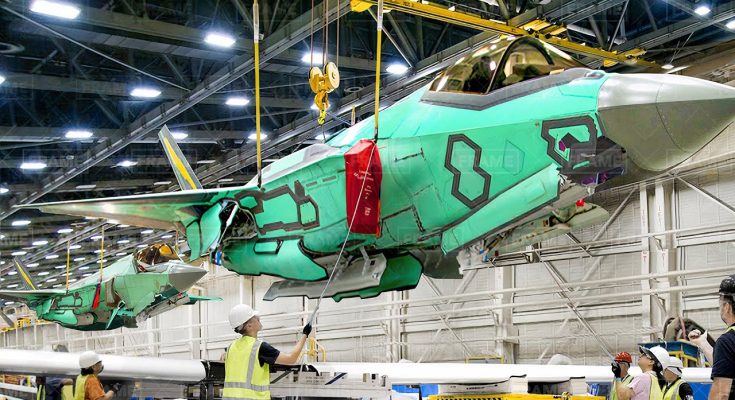A tour of a billion-dollar U.S. factory producing advanced jet fighters like the F-35 and F-16 reveals the sheer scale, precision, and innovation required to produce these world-class machines. These aircraft are the backbone of modern air forces, with the F-35 representing the cutting-edge of fifth-generation fighter technology, and the F-16 providing proven, versatile capabilities. The production line where these iconic jets come to life is a testament to the sophistication of aerospace manufacturing and the relentless pursuit of excellence.
Upon entering the factory, visitors are immediately struck by the vastness of the space. The factory floor stretches out in front, filled with enormous assembly stations, cutting-edge equipment, and an organized, high-efficiency layout. This is a place where aerospace engineers, skilled technicians, and automated systems work in harmony to build some of the most advanced fighter jets in the world. The entire facility is tightly secured, with restricted access areas that require top-level clearances, as the designs and technologies involved are highly sensitive.
The production line for both the F-35 and F-16 starts with the assembly of the aircraft’s airframe. The process begins with the careful integration of lightweight, durable materials like titanium and advanced composites, designed to ensure strength and reduce the aircraft’s radar signature. Workers in specialized stations use laser-guided tools and robotic systems to precisely assemble the fuselage, wings, and tail sections. The precision required in these steps is crucial, as even the smallest misalignment could affect the aircraft’s aerodynamics or performance.
In one area of the factory, the F-35’s advanced stealth capabilities come to life. Unlike older fighter jets, the F-35 is designed with a combination of sleek, angular surfaces and radar-absorbent materials that minimize its radar signature. Engineers at this stage apply specialized coatings to the airframe and install radar-absorbing panels that are a core component of its low observability. The F-35’s internal weapons bay is also built into the fuselage here, a unique feature that allows the aircraft to carry weapons without compromising its stealth profile.
As the assembly continues, technicians begin the process of installing the F-35’s sophisticated avionics systems. These include advanced radar, sensor suites, and communication equipment that allow the F-35 to operate in a highly networked environment, share real-time data with other aircraft, and engage in complex combat scenarios. The installation of these systems is a precise, careful process, as the avionics are highly sensitive and require calibration to ensure the aircraft’s performance in a variety of conditions.
Meanwhile, the F-16, known for its agility and versatility, undergoes its own assembly process. While the F-16 is not a stealth aircraft, it is still equipped with advanced avionics and weapons systems, and its design focuses on speed and maneuverability. As workers assemble the airframe, they install avionics, sensors, and the aircraft’s weaponry, ensuring that the F-16 is ready for a variety of missions, from air-to-air combat to ground strikes.
Once the airframe, avionics, and weapon systems are fully integrated, both aircraft move to the next stage of production: testing and fine-tuning. The jets undergo extensive ground testing to ensure that all systems are functional and the aircraft is ready for flight. In the testing phase, engineers conduct rigorous checks on everything from the engine systems to the flight control software. These tests ensure that the aircraft will perform flawlessly in real-world combat situations.
At the end of the production line, both the F-35 and F-16 jets are meticulously inspected, ensuring that every component is working to specification. Only after passing these final inspections and test flights are the aircraft cleared for delivery to the U.S. military and allied forces around the world.
The production lines for these jets represent the fusion of cutting-edge technology, skilled labor, and precision engineering. Each aircraft that comes off the line is a highly specialized machine, designed to give its pilot unmatched capabilities in the air. The factory’s blend of automation and human expertise ensures that the U.S. remains at the forefront of military aviation technology, providing air superiority for years to come.



